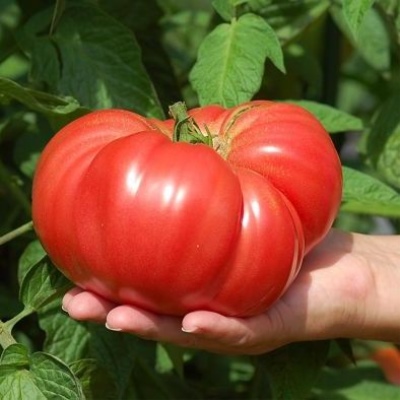
- Authors: Dederko V.N., Postnikova O.V.
- Year of approval: 2009
- Name synonyms: Skorpion
- Category: grade
- Growth type: indeterminate
- Appointment: fresh consumption, for juice
- Ripening period: mid-season
- Ripening time, days: 112
- Growing conditions: for open ground, for film greenhouses, for greenhouses
- Bush size: tall
Tomato varieties, bred in 2000, are already in fact the "golden fund" of domestic breeding. And Scorpio is at least as good as many other species. You will have to carefully study its features in order to realize the benefits of such a culture.
Breeding history
The developers of the Scorpion are the famous breeders Dederko and Postnikova. Their very participation acts as a guarantee of quality. The variety has been allowed to grow in private gardens since 2009.
Description of the variety
The plant has an official synonym - Skorpion. It is worth emphasizing that it is a variety in a narrow botanical sense, and not just in an everyday name. This variety is characterized by an indeterminate type of growth. Therefore, you will definitely have to regulate the development of the bushes. The bushes themselves rise to a height of more than 1.5 m, are distinguished by powerful development and are covered with dark green leaves.
The main qualities of the fruit
In an unripe state, Scorpio berries are distinguished by a simple green color. Then they will acquire a raspberry color. The usual mass of large berries reaches 0.4 kg. In the largest specimens, it can reach 0.8 kg. Other features:
- flat-round shape;
- poorly pronounced ribbing;
- 4 to 6 fruiting clusters on the main stem;
- the development of simple inflorescences;
- stalks without articulation;
- decent keeping quality.
Taste characteristics
Scorpion Pulp:
- a saccharist;
- has excellent density;
- fleshy;
- juicy enough.
Ripening and fruiting
The variety is ranked in the mid-season category. Normally, the development of the crop occurs 112 days after the emergence of green seedlings on the surface. The fruits can be harvested for a long time. They are usually filmed in July, August and September. Of course, these terms depend on the weather and on the care of the landings.
Yield
The plant is highly fertile. The declared ability to produce up to 12.6 kg of berries per 1 m2. This figure varies depending on the cultivation conditions and how diligently the farmers care for the Scorpio.
The timing of planting seedlings and planting in the ground
You can prepare containers and saturate them with substrate, and then plant seeds there both in March and in April. However, the final choice must be made independently, taking into account the actual weather and climate regime. The time for transshipment to a permanent place comes in May or June.

Growing tomato seedlings is an extremely important process, because it largely depends on whether the gardener will be able to harvest at all. All aspects must be taken into account, from seedbed preparation to planting in the ground.
Landing scheme
The optimal placement density is 3 tomatoes per 1 sq. m. Exceeding this indicator is impractical. Otherwise, there are no special wishes.

Growing and care
The prerequisites for success are:
- systematic removal of stepchildren;
- fastening to the support;
- forming in 1 stem.
The variety is considered to be resistant to fruit cracking. However, over-watering it is still undesirable in order to accurately avoid this problem. With proper care and timely preventive treatments, you can not be afraid of diseases. Systematic loosening and fertilization is imperative. With such a sophisticated approach, you can achieve a rich harvest.
When preparing seedlings, you need to keep them at a temperature of 23-25 degrees. It is useful to use growth stimulants. Seedlings are picked in the phase of 1 or 2 true leaves. The color saturation of the berries is determined by how intense the sunlight is. The highest productivity is achieved with drip irrigation of the plant, which is formed into 1 stem.




A plant needs different micronutrients at each stage of growth. All fertilizers can be divided into two groups: mineral and organic. Folk remedies are often used: iodine, yeast, bird droppings, eggshells.
It is important to observe the rate and period of feeding. This also applies to folk remedies and organic fertilizers.


Review overview
The descriptions of the farmers confirm the large-fruited and decent taste of this tomato. Even inexperienced gardeners will be able to grow it without any special difficulties. It is worth considering that when grown outside the greenhouse, protection against late blight is quite difficult. And in many cases it is not possible to save the landings at all. But this variety demonstrates sustainable fertility in any year.

























































































